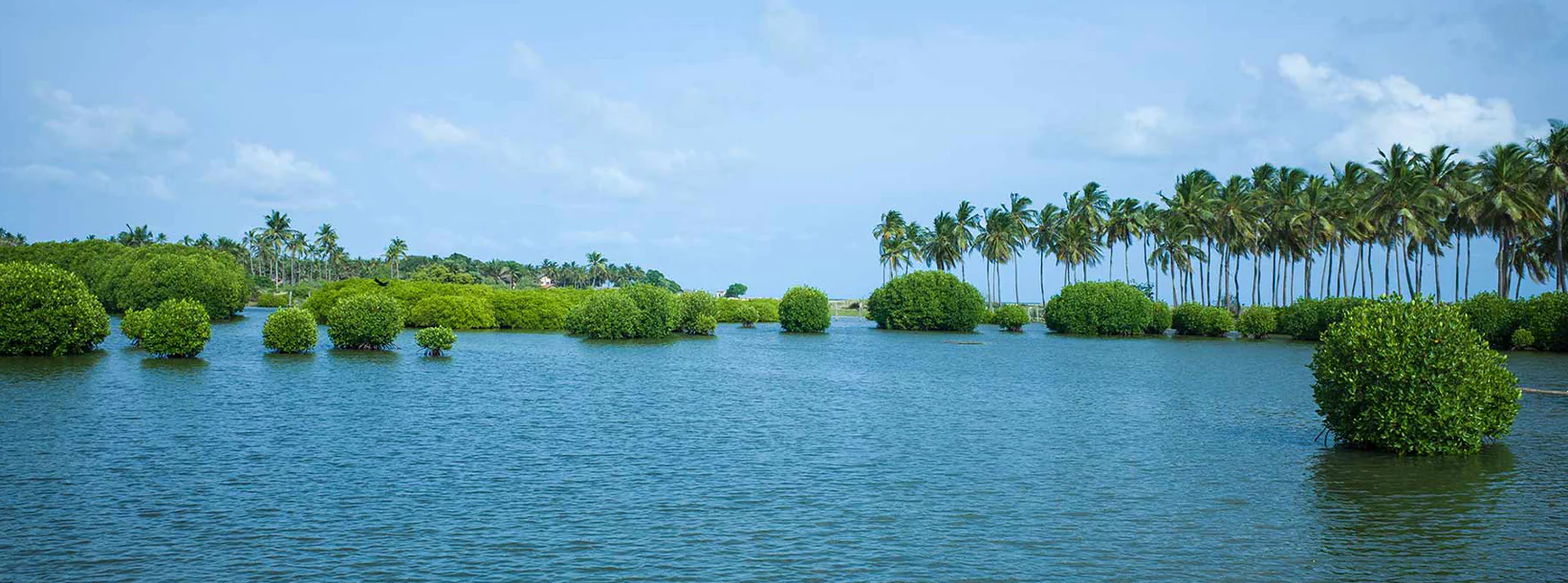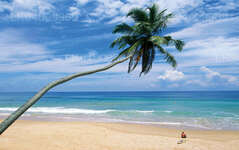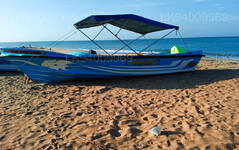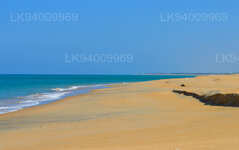
Kalpitiya City
Kalpitiya is a picturesque peninsula on the northwest coast of Sri Lanka, renowned for its stunning beaches and water-based activities. It's a popular destination for kitesurfing, dolphin watching, and exploring the diverse marine ecosystem, including the Bar Reef Marine Sanctuary.
Alankuda Beach
Alankuda Beach in Sri Lanka is a stretch beach recently developed in the Kalpitiya peninsula off the north-western coast of Sri Lanka. Alankuda Beach is a starting point for off-shore Whale Watching and Dolphin watching at Kalpitiya. Alankuda Beach offers a range of water sports: sailing, windsurfing, kayaking, canoeing, kite surfing, and snorkeling.
For more details on water sports, visit our article on Snorkeling in Sri Lanka and Surfing in Sri Lanka
When you visit Alankuda Beach in Sri Lanka, you have the chance to see a multitude of other places at the same time! For example; Wilpattu National Park, the island’s largest wildlife sanctuary which is home to one of the highest concentrations of leopard in the world along with myriad other wildlife, is only an hour’s drive away.
The 17th century St. Anne’s Church in Talawila which is the island’s most renowned Catholic shrines in the country, is a mere five miles away. Legend has it that a Portuguese trader had a vision of St Anne while resting under a banyan tree and returned to build the church that now sprawls over the site. In March and August each year, St. Anne’s hosts the largest catholic festivals in the country, when up to 700,000 pilgrims would come to pray.
Munnesweram Kovil is another such religious site holding prominence in the area. It is a Hindu temple whose origins date back to great antiquity. A highly revered temple dedicated to Shiva and associated with Kali, its deity’s name can be translated as the ‘Lord of Antiquity’ and its goddess’ as the ‘Goddess of Beautiful Form’. This temple is a must-visit if you're ever coming to Alankuda Beach in Sri Lanka
The Puttlam salt pans are a half hour drive away for those interested in learning what one of our most basic condiments goes through before it ends up on our tables and in our food.
About Puttalam District
Puttalam is a town in Puttalam District,Sri Lanka. Situated at the apex of the Coconut triangle, Puttalam is the second largest Coconut producer of the country. And Tabbowa, a fertile land for agriculture records highest paddy production per acre.Puttalam is the main salt producer of the country. Holland fort at Kalpitiya, St. Anne's Church in Thalawila,Munneshwaram Kovil in Chilaw and Mohideen Jumma Mosque (known as Grand Mosque) in Puttalam underline the historical importance of this region.
About North Western Province
North Western Province is a province of Sri Lanka. The districts of Kurunegala and Puttalam formulate North Western or Wayamba. Its capital is Kurunegala, which has a population of 28,571. The province is known mainly for its numerous coconut plantations. Other main towns in this province are Chilaw (24,712) and Puttalam (45,661), which are both small fishing towns. The majority of the population of Wayamba province is of Sinhalese ethnicity. There is also a substantial Sri Lankan Moor minority around Puttalam and Sri Lankan Tamils in Udappu and Munneswaram. Fishing, prawn farming and rubber tree plantations are other prominent industries of the region. The province has an area of 7,888 km² and a population of 2,184,136 (2005 calculation).
Wayamba is the third largest paddy producing area in Sri Lanka .Wayamba has a highly developed agricultural economy, growing a variety of fruits and vegetables, flowering plants, spices, oil-seeds in addition to the traditional plantation crops such as Coconut, Rubber and Rice. Rich soils and varied climate give Wayamba a potential for growing of virtually any crop.
In Wayamba or North Western province, home for ancient Buddhist rock temples, magnificent citadels Panduwasnuwara, Dambadeniya, Yapahuwa and Kurunegala. Impressive remains of those citadels, palaces, Buddhist temples and monasteries provide exciting sight seeing to the visitors.



























